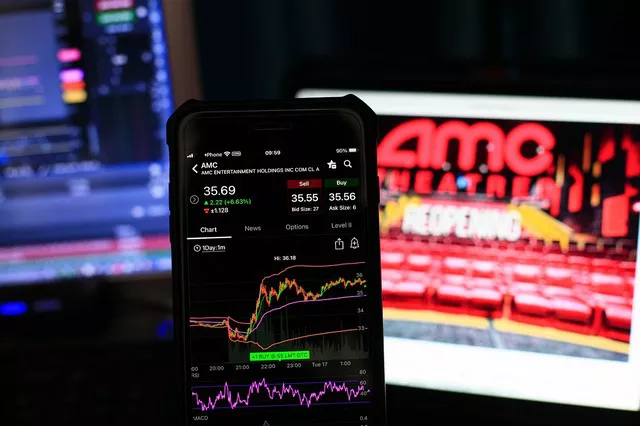Futures trading represents a dynamic and strategic approach to participating in financial markets, offering opportunities for profit through speculation and hedging. Professional futures traders employ sophisticated strategies, leverage advanced tools, and adhere to disciplined methodologies to navigate the complexities of futures markets. This article explores the strategies, techniques, risk management practices, and essential skills that define how professional futures traders operate in today’s global financial landscape.
Introduction to Futures Trading
Futures markets facilitate the trading of standardized contracts to buy or sell underlying assets at predetermined prices and dates. Key characteristics include leverage, liquidity, and the ability to speculate on price movements across a diverse range of commodities, currencies, interest rates, and equity indices.
Core Strategies Employed by Professional Traders
1. Trend Following
Definition: Identifying and capitalizing on sustained price movements in a particular direction.
Techniques: Using technical indicators (e.g., moving averages, trendlines) to confirm trends and enter trades at opportune moments.
Risk Management: Setting stop-loss orders to limit losses and trailing stops to lock in profits as trends develop.
2. Mean Reversion
Definition: Exploiting price reversals from statistically significant deviations from their average values.
Techniques: Utilizing oscillators (e.g., RSI, stochastic) to identify overbought or oversold conditions and anticipating price corrections.
Risk Management: Establishing clear entry and exit criteria based on historical price patterns and market sentiment.
3. Spread Trading
Definition: Simultaneously buying and selling related futures contracts to profit from price differentials.
Techniques: Executing calendar spreads (same contract month but different expiration dates) or inter-commodity spreads (related assets in different markets) to capitalize on relative price movements.
Risk Management: Monitoring spread relationships and adjusting positions to mitigate price risk and optimize profit potential.
Technical Analysis and Charting Tools
1. Candlestick Patterns
Usage: Identifying market sentiment and potential price reversals through patterns such as doji, engulfing, and hammer candles.
Application: Integrating candlestick analysis with other technical indicators to confirm trading signals and enhance decision-making accuracy.
2. Chart Patterns
Patterns: Recognizing formations such as head and shoulders, double tops/bottoms, and triangles to forecast price movements and plan trade entries and exits.
Validation: Confirming patterns with volume analysis, trendlines, and Fibonacci retracements for comprehensive trade setups.
Fundamental Analysis and Market Sentiment
1. Economic Indicators
Impact: Assessing reports on GDP, inflation, employment, and consumer sentiment to gauge economic health and anticipate future price trends.
Interpretation: Analyzing central bank policies, geopolitical events, and supply-demand dynamics for commodities to inform trading decisions.
2. Seasonal Trends
Observation: Recognizing recurring patterns and cyclicality in futures markets influenced by seasonal factors (e.g., agricultural harvests, energy consumption).
Strategy: Adjusting trading strategies to align with historical price behaviors and capitalize on anticipated seasonal fluctuations.
Risk Management Practices
1. Position Sizing
Methodology: Determining the appropriate contract size or number of contracts based on account size, risk tolerance, and market volatility.
Calculation: Using techniques such as fixed fractional sizing or the Kelly criterion to optimize capital allocation and minimize potential losses.
2. Stop-Loss Orders
Implementation: Placing predefined price levels to automatically exit losing trades and protect against adverse market movements.
Adjustment: Adjusting stop-loss orders based on market conditions, volatility changes, and trade profitability to preserve capital and manage risk effectively.
See Also: How Does a Futures Exchange Work?
Trading Psychology and Discipline
1. Emotional Control
Mindset: Maintaining objectivity, patience, and resilience in response to market fluctuations and unexpected developments.
Adherence: Following trading plans, rules, and strategies consistently to avoid impulsive decisions driven by fear, greed, or uncertainty.
2. Continuous Learning and Adaptation
Education: Staying informed about market trends, technological advancements, and regulatory changes through research, seminars, and professional networks.
Flexibility: Adapting trading strategies and approaches based on evolving market dynamics, feedback from trades, and lessons learned from successes and setbacks.
Advanced Trading Tools and Technology
1. Algorithmic Trading
Automation: Developing and deploying algorithms to execute trades based on predefined criteria, including technical indicators, price patterns, and market conditions.
Advantages: Enhancing trade execution speed, accuracy, and scalability while reducing emotional bias and human error.
2. Data Analytics and Market Intelligence
Analysis: Utilizing big data, machine learning models, and predictive analytics to identify patterns, forecast market trends, and optimize trading strategies.
Decision Support: Integrating data-driven insights with fundamental and technical analysis for informed decision-making and strategic positioning.
Conclusion
Professional futures traders navigate volatile and complex markets with a blend of technical expertise, strategic acumen, and disciplined risk management. By employing robust trading strategies, leveraging advanced tools and technologies, and maintaining psychological resilience, traders seek to capitalize on price movements and achieve consistent profitability. As the global financial landscape evolves, staying adaptable, informed, and committed to continuous improvement remains essential for success in futures trading. Embracing innovation, refining skills, and adhering to best practices enable traders to thrive in competitive markets while managing risks and seizing opportunities effectively.


